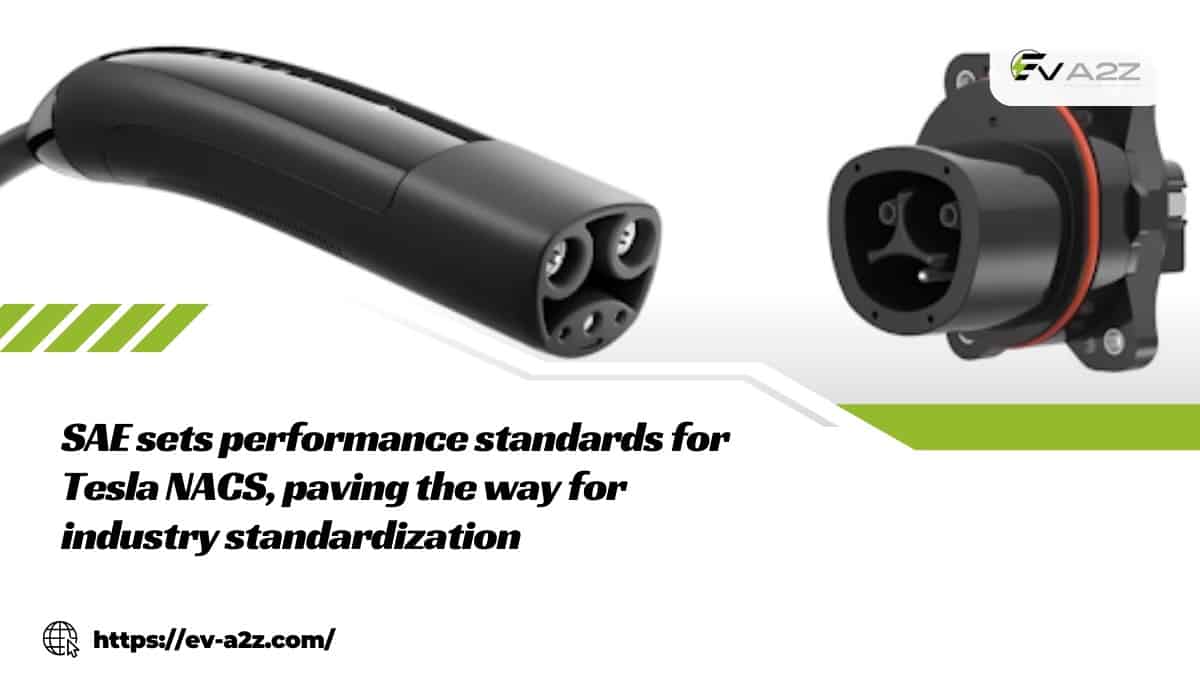In a significant development for the electric vehicle industry, prominent US automotive industry organization SAE International has announced its intention to establish performance standards for Tesla’s charging plug. Remarkably, this move signals a step closer to adopting the Tesla plug as the industry standard across all EVs.
SAE International’s decision comes on the heels of recent announcements by major automakers, including Ford, General Motors, and Rivian. These three are the first automakers to declare their plans to join Tesla’s expansive Supercharger network and adopt its North American Charging Standard (NACS) connector in their next-gen EV models by 2025. More recently, Swedish automaker Volvo Cars announced the same strategy, following the trio’s lead.
However, it should be noted that the rival Combined Charging System (CCS) connector will continue to be used in thousands of existing EVs.
The end of CCS?
SAE International has already commenced work on establishing the standards, with plans to finalize them within six months. Sustainable Mobility Solutions President for the innovation arm of SAE’s nonprofit parent company Frank Menchaca asserted that these standards would cover aspects including the following:
- connection process between the plugs and charging stations
- cybersecurity measures
- charging speeds
- reliability requirements
Interestingly, Guidehouse Research e-Mobility analyst Sam Abuelsamid noted that this move might ultimately spell the end for CCS, which was originally designed based on SAE’s standards.
“It’s only a matter of time before no one is building new EVs with CCS connectors on them.”
Guidehouse Research e-Mobility analyst Sam Abuelsamid
Analyst Abuelsamid further explained that CCS is more challenging to operate and connect to vehicles compared to Tesla’s NACS connector. In fact, most consumers who have used both options would choose Tesla’s connector due to its user-friendliness.
However, charging stations will need to adapt both plugs for the foreseeable future, given a large number of vehicles currently equipped with CCS connectors.
No royalties but a charging fee: EV owners will need to pay Tesla for network access
President Menchaca stated that Tesla and industry engineers are now collaborating on the development of these standards.
He clarified that automakers and consumers would not have to pay royalties to Tesla. However, EV owners will need to pay Tesla for charging on its network.
Furthermore, he also emphasized that SAE International is not favoring a specific connector and still aims to support CCS.
The decision to set standards for NACS stems from Ford, GM, and Rivian’s adoption of the connector. These major developments indicated the NACS’ potential widespread usage.
Menchaca believes that standardized NACS connectors will offer consumers more choice, convenience, and access to a larger charging network. He further added that if more stakeholders come on board, it could become the predominant method of charging in the future.
Stellantis and Hyundai considering the switch: More automakers eyeing Tesla’s connector
Automakers like Stellantis and Hyundai also contemplate switching to Tesla’s connector.
For context, almost all automakers currently employ CCS connectors, except Tesla. However, that standard is about to change.
Tesla’s Superchargers have gained significant attention from other automakers due to its extensive network of direct current fast-charging plugs in the US, strategically located along major travel routes. The Department of Energy disclosed that Tesla presently operates 1,797 Supercharger stations with more than 19,000 plugs in the US. Moreover, Tesla’s Superchargers’direct current fast-charging capability enables relatively quick charging for EVs during travel.
GM, Ford, Rivian, and Volvo owners will soon gain access to Tesla’s vast Supercharging network.
All that said, industry analysts suggest a growing momentum to adopt Tesla’s connector as the US standard. However, vehicles may need to support both connectors during the transition period.
See Also:
- Tesla’s NACS connector becomes mandatory for state funding, encouraging adoption by automakers
- Rivian emerges as the latest automaker to join Tesla’s charging network
- Stellantis may join the growing NACS family, but not so soon
- GM secures access to Tesla’s vast Supercharger network
- Ford EVs to have access to Tesla Superchargers in 2024
With the automotive industry rallying behind Tesla’s plug, the potential widespread adoption of the NACS connector represents a significant advancement in unifying and streamlining EV charging infrastructure.

